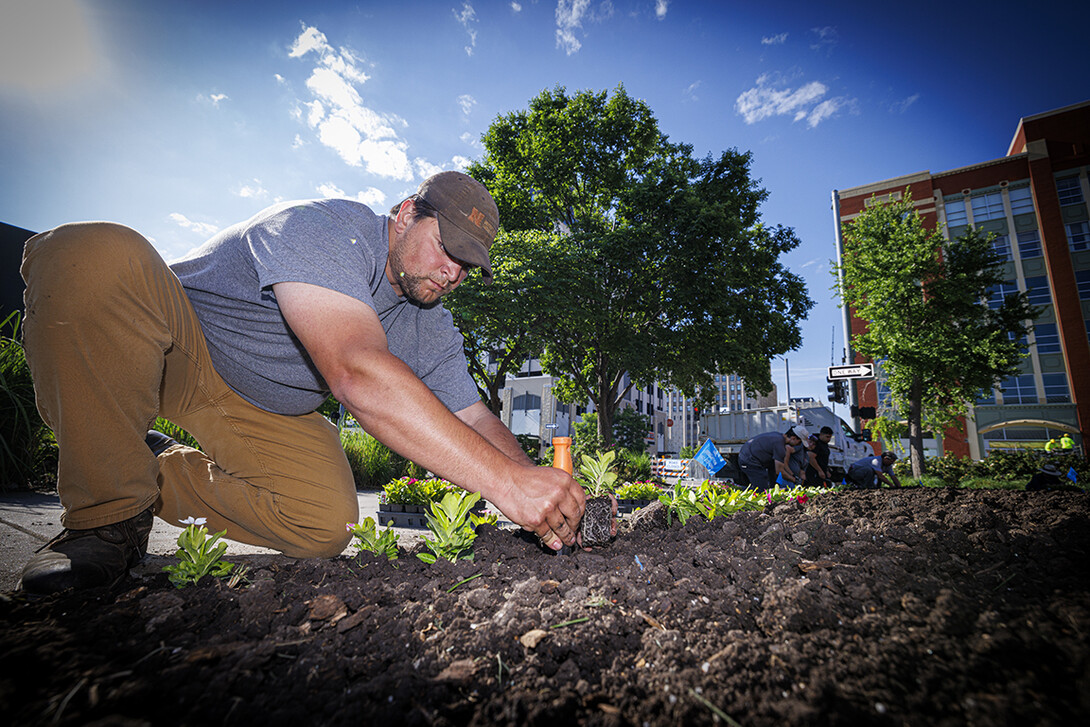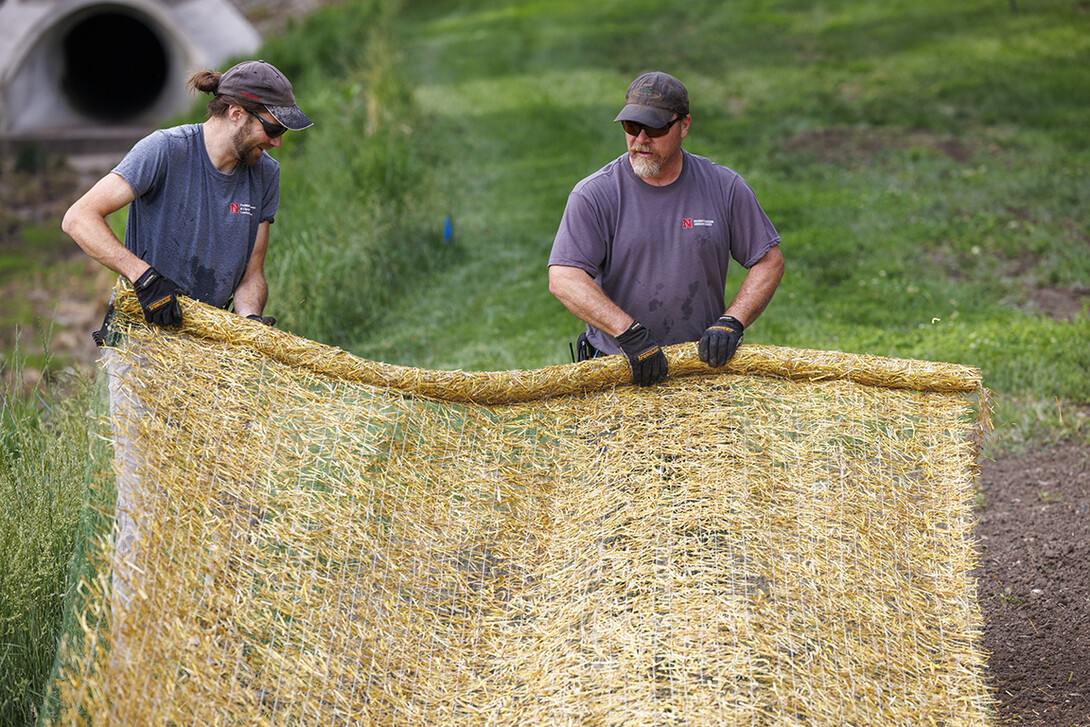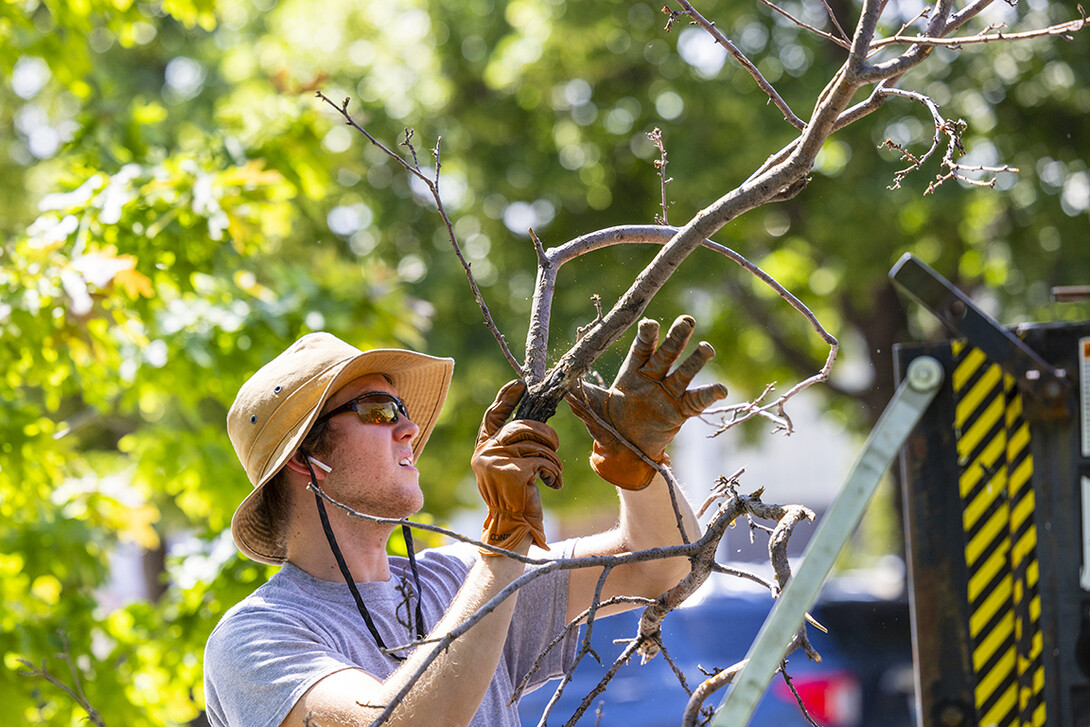
The University of Nebraska–Lincoln’s campuses offer acres of sunny vistas to soak in during the summer months, and Landscape Services staff work daily to maintain those beautiful outdoor spaces.
Once the snow melts and the plants bloom, crews start preparing spaces for the public to enjoy, according to Brian Dieterman, an assistant manager for Landscape Services on East Campus.
“You want as many places on campus to be as inviting as possible,” Dieterman said.
Warm weather upkeep starts with winter cleanup. Crews sweep up sand and salt used for snow, clear out and remulch perennial beds and clear grassy areas for mowing. Dieterman said crews spend most of March on these kinds of tasks.
The 275 acres of City Campus and 342 acres of East Campus are divided into areas, with crews of about five people assigned to each.
Easily the most time-consuming task of summer is mowing, Dieterman said. During times of warm weather and good rain, some areas get mowed twice a week.
“Everybody’s probably spending at least a quarter of their work week, if not more, just mowing,” he said.
Weeding perennial beds is another common task this time of year. Dieterman said they try to work on each flower bed once a week. Maintenance includes cutting off dead flowerheads and dividing up plants that are growing too large and replanting them. Planting perennials allows for low-maintenance landscapes.
“By trial and error, we’ve figured out what works and what doesn’t,” Dieterman said.

Landscape Services also cares for about 7,000 trees across the City and East campuses. Most of this involves pruning or clearing limbs over sidewalks. It could also entail repairing storm damage or treating for disease or pests. This work occasionally involves removing trees because of severe damage or death because of one of these issues.
The opportunity to work with trees is one of Dieterman’s favorite parts of the job. Because they don’t necessarily get to do this as often, it becomes a special, exciting occasion.
“I enjoy the pruning, the chainsaw work and working at height,” he said. “There’s certainly a little bit of an adrenaline rush 30 to 40 feet in the air.”
Although Landscape Services staff might have a plan for which tasks need to be completed on a given day, sometimes circumstances beyond their control dictate what the day looks like. Crews adapt to ever-changing conditions to prioritize their work. A storm, for example, might shift responsibilities to cleaning up or otherwise addressing damage.
“We’ve had straight-line winds where you can literally see where the wind column came through,” Dieterman said. “Or we’ve had other times where you can see where the cell was dropping lightning bolts.”
Anything causing a safety issue is going to be the first priority, such as if a damaged tree is a hazard to pedestrians.

Crews also respond to everyday weather conditions. If it’s been hot and dry, they might spend less time mowing and weeding and more time irrigating some areas of campus or planting where needed.
They also prioritize high traffic areas such as near Memorial Stadium in the fall or Maxwell Arboretum on East Campus. The arboretum holds a special place in Dieterman’s mind. He’s been working in that area in various capacities since shortly after he started with Landscape Services more than 20 years ago. He likes the spot because it’s a place where the landscape specifically makes the location a campus destination for students, faculty, staff and the public.
“We have lots and lots of people who come here and have picnics and take pictures and take tours,” he said. “This is one of the spots people actually come to enjoy the landscape.”
Dieterman said it’s important to have places like this on campus, where people can go for a literal change of scenery.
“For everyone, whether they’re working here or going to school here or just coming to visit, the landscape can be a place to get away from whatever stressor they have going on,” Dieterman said. “When they come out in the landscape, they can get away, come to relax.”







